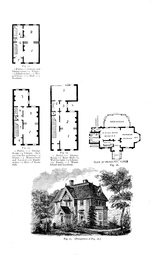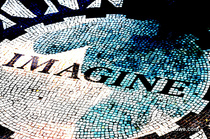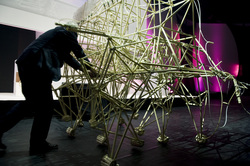
Libraries are becoming "learning commons"--not only repositories of print materials, realia, and computer banks, but also places where individual learning and collaboration occur in flexible spaces. This is in line with the needs of 21st century learners to become independent inquirers who are able to effectively find information, evaluate its usefulness, analyze how to use it, and work with others in sharing information and creating products to show their learning and communicate with others. Older library designs often inhibit these changes in learning, and building a facility to accommodate these needs requires planning and support.
Long-range planning for a library may start with a librarian's vision for the program, but it requires the buy-in and ongoing support of the entire learning community. The input of a library committee with representatives from all member groups--administration, teachers, students, and parents--is essential to this process. Parent groups such as the PTA can also be instrumental in supporting change and helping in funding. With a shared vision, research to support change, and an appropriate long-range plan, the teacher-librarian can meet the needs of 21st century learners in building a successful library space and programming.

As we listened to the Week 2 wrap-up of "I-DO Manage" this evening, the concept that kept popping up was change: the library changing to meet the needs of 21st century learners, changing the physical space to accommodate learning styles, changing displays to entice readers, and changing perceptions of our stakeholders through our interactions and our own continued learning efforts.
Ranganathan was prophetic when he wrote his fifth law of library science--"The library is a growing organism." The Five Laws of Library Science (Bombay: Asia Pub. House, 1963). Libraries have always been places of inquiry and learning; with the booming amount of information the digital age is affording us, the need for libraries to keep abreast of current resources and access to such information has grown exponentially. Finding, evaluating, using, and creating with this information requires a wide variety of materials, technology, and flexible spaces which sometimes clash with old facilities, old programs, and old ways of thinking about learning.
None of these changes will be completely successful, however, without the interpersonal relationships that entice potential users of the library to avail themselves of the resources and services. As a librarian, I will have to convince my learning community that time spent in the library and with the materials is worthwhile. I will not only have to manage today's resources, physical space, and programming, but also look to the future and anticipate changes based on the needs of my patrons. This will require continuing education on my part, as well as advocacy efforts to bring about the needed changes. Hopefully, with relationships well-established, it will not be a solo mission--I'll have my learning community advocating right beside me.

This third module of the I-DO Make a Difference series focuses on the librarian as a manager--of facility, budget, resources, personnel, and program. We began by viewing a proposed lists of tasks a librarian undertakes, and were invited to amend it. Both the original list, and the items that the participants added, described an exhausting workload! I chose this image to represent what running a library entails: often just one lone librarian, dealing with so many details that have to be firmly rooted in curriculum, pedagogy, and campus needs and expectations but networked to cover all those needs and form a cohesive program. Whew!
The two concepts that arose to manage this diverse list of tasks were organization and creativity. A librarian should be, by nature, prone to organization--after all, our job is to organize resources and information in such a way as to make it easy for our patrons to efficiently find what they need. It's just that there is SO much to organize: the collection, the budget, the daily/weekly/yearly schedule, the learning spaces, and many other responsibilities that fall in a librarian's lap. And it all should be done in the spirit of customer service and curricular support. Another whew!
Where organization requires great effort, I think creativity takes more thought: How am I going to draw in my patrons this week? What creative ways can I use to connect my library lesson to classroom learning, without sounding like a repeat of the lesson they just heard? What is going to surprise and delight and inform and entertain my community? Where an organizing project may end (such as yearly inventory), creativity must be drawn upon day after day, week after week, as needs and interests and student/staff populations change. Technology plays a huge role in this process as well--add keeping up with tech trends to the to-do list!
Of all the modules in this series, this may be the one I learn the most from as a librarian wannabe. I have experience teaching and collaborating--but this will be the first time I manage a school-wide program. I'm looking forward to the next two weeks!



 RSS Feed
RSS Feed